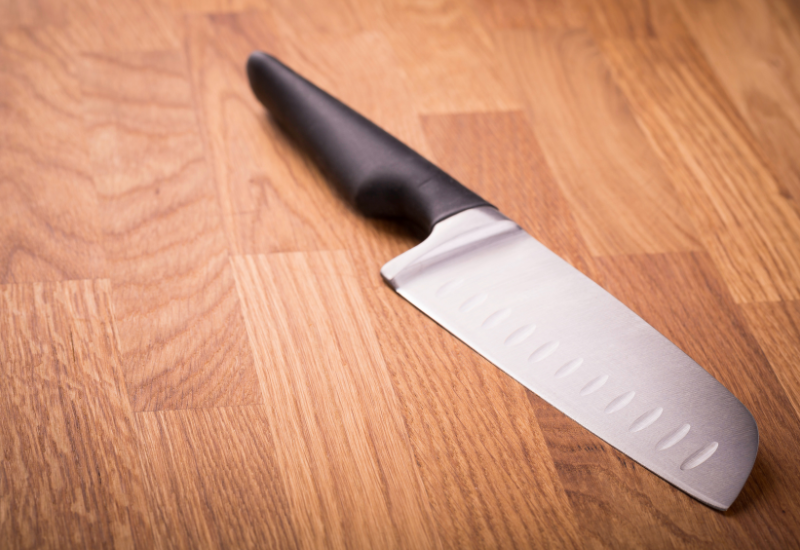
Santoku Knife and its Three Virtues
When it comes to Japanese delicacies like Salmon sashimi and the mouth-watering Fatty Tuna sushi pieces placed on elegant-looking plates and Zen-styled tableware, diners can never overlook the beauty of Japanese culinary cultures. However, diners realize what’s truly behind the mesmerizing aesthetics, the sensational beauty of vivid-colored orange Salmon slices, and the powerful blends of subtle flavors – it’s the Japanese knife.
Japanese knives are renowned for their traditional features, efficiency, professionalism, and unique designs. For chefs and gourmet cooks, Japanese cuisine definitely tops the list of the most challenging food to prepare; hence, it requires the mastery of the blades. Intricate processes that range from the selection of ingredients, plate component placement, seasoning of liquid condiments, and the unique aesthetics as products of such intricacy, made Japanese food among the world’s most loved cuisine that comes along with tricky cooking processes.
Cordon bleus and gourmets from various parts of the globe put high emphasis on the delicacy Japanese cuisine has – showcasing its subtleness through the colors, placement, and soft, authentic flavors each dish portrays. With intricacy being the most prominent characteristic of Japanese dishes, specifically sushi, a variety of Japanese knives are then introduced to the world in order to perform various tasks designed to craft specific dishes.
There are numerous kinds of Japanese knife types. However, one of the most common Japanese knives is the Santoku or the multi-purpose knife. A Santoku knife is an all-round, multi-purpose, general kitchen knife that does all it needs to when asked to. Its blade is wide and spacey, which enables cuts and chops through numerous ingredients like meat, fish, and vegetables. It is also commonly referred to as the Bunka knife as well due to the similarities in appearance and usage. As a multi-purpose, home-use knife, Santoku is often used by chefs to perform the tasks in all kinds of Japanese food-making and not only for sushi. Although the Santoku knife is highly suitable for the cutting of vegetables, it is a chef’s must-have to perform the daily, ordinary tasks.
Why is it the knife of ‘Three Virtues’?
The Santoku knife is also known as the knife of ‘Three Virtues’ as it can chop, cut, and slice ingredients professionally; and as earlier mentioned the Santoku can also be used with three kinds of ingredients: veggies, meat, and fish. This special, all-round blade is one with potential to perform all kinds of tasks without fail, so it is highly important and essential to care for Santoku knives very well. Sharpening, storing, and cleaning Japanese blades are a part of the Japanese culture and traditions deemed truly significant in the culinary industry of Japan; hence, for any blade, handling them is important.
Santoku Knife Types
Santoku knife has a wide variety of types – being, made out of different materials and different lengths. For various uses, the Santoku knife can generally be divided into these common types: the steel Santoku, the damask Steel Santoku, and the Ceramic steel Santoku. Although the Santoku knife has a normal length range of 13 cm to 30 cm, the manufacturer or knife company can always adjust the length to however the chef wants it to be. As the blade and the knife handle works together to find balance and be in great harmony during its utilization, selecting a knife with just the right length and weight that matches your grip will be a perfect way to choose your very own Santoku.
Smooth or hollow blade textures can also be an option for chefs and professionals. Hollow blades are forged to prevent food and small ingredients from sticking onto the blade while cutting or slicing. However, this depends on what process you are at in the crafting of dishes. Knife handles are commonly made out of metal, synthetic materials like acrylic, or fine quality wood. In the end, selecting a Santoku that works well in your hands and feels comfortable is just the best method to find your right blade.